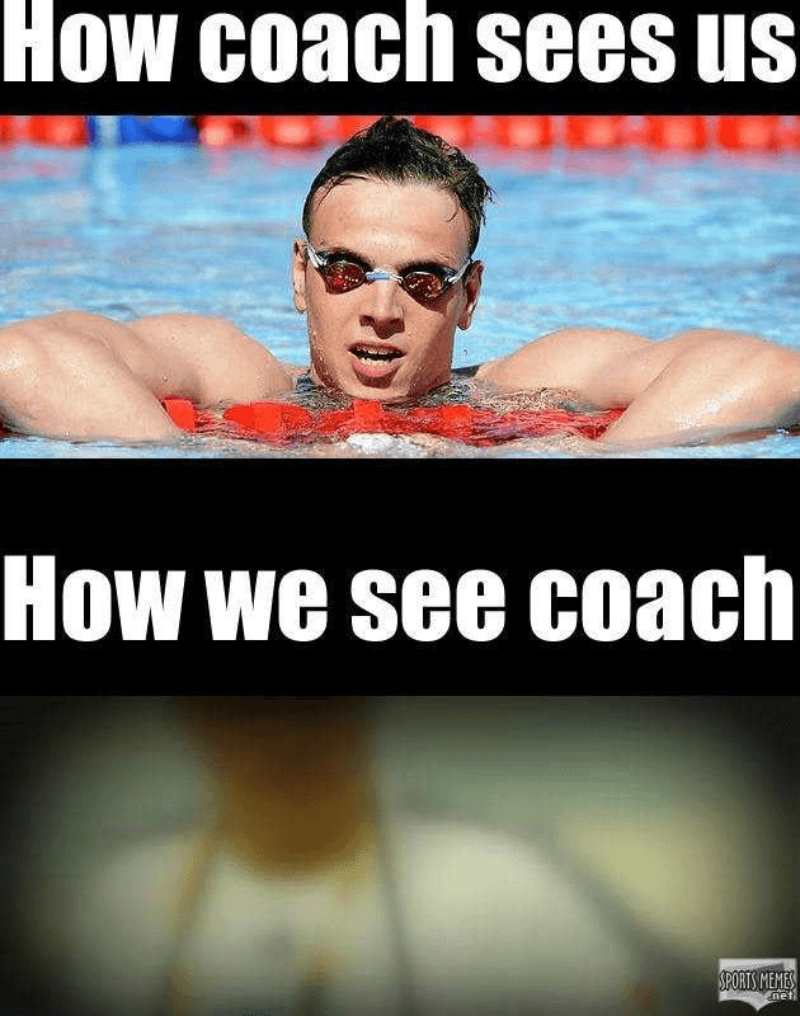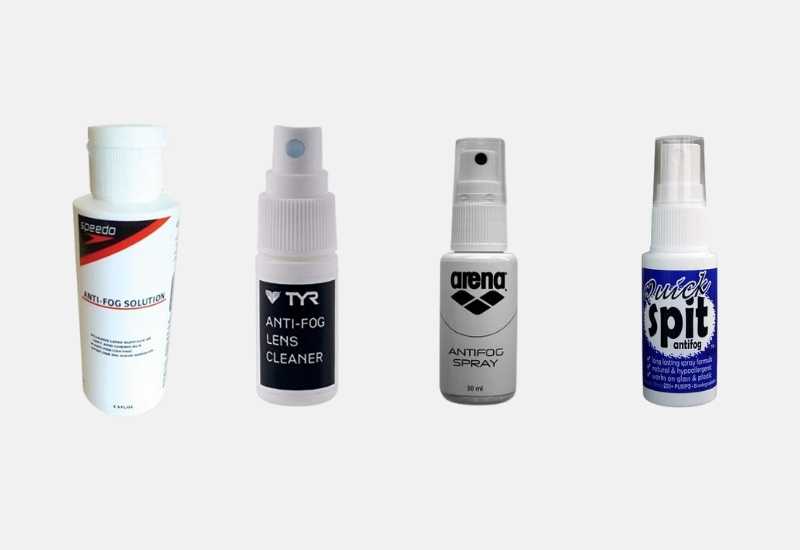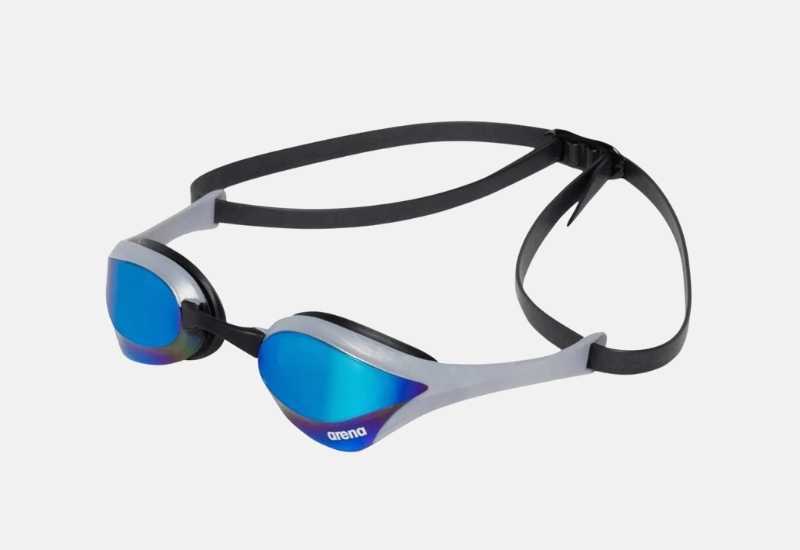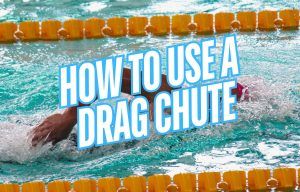Fed up with foggy swim goggles? Here’s why it happens, how to defog your swim goggles and the best ways to stop fogging from happening in the first place.
Swim goggles are a swimmer’s best friend in the water.
They allow you to see clearly under the water, see the wall (so you can time your turns like a boss), see the pace clock, and see that swimmer who has errantly swerved into your lane.
But, as you no doubt know, swim goggles can get fogged up, reducing vision and being a general pain in the butt.
After all, nobody wants to spend half their swim workout clearing out the lens in their swim goggles.
In this guide, you will learn why swim goggles fog up, the best ways to defog your swim goggles, and how to prevent it from happening in the first place.
Next stop—clear vision!

Why Do Swim Goggles Get Fogged Up?
Foggy swim goggles happen as a result of the difference in temperature in the goggle lens and the external environment.
Even the best swim goggles have condensation accumulate from sweat and water vapor, overpowering the factory anti-fog coating. The air inside the goggles warms thanks to your increased body heat compared to the temperature outside.
As you work harder in the pool, your body temperature goes up, the air inside the goggles gets hotter, and fog (condensation) clouds the lenses of your swim goggles.
How to Stop Swim Goggles from Fogging Up
1. Don’t wipe the inside of your swim goggles
Every swimmer at some point will wipe the inside of their swim goggles with their fingers. It’s as natural as the smell of chlorine after a long swim practice.
But each time you do this, it wipes away the anti-fog coating that goggle manufacturers place in new swim goggles.
Although counter-intuitive, try to resist the urge to use your fingers to clear water from the inside of your swim goggles.
2. Use an anti-fog spray
The anti-fog coating inside swim goggles degrades over time. You can “top up” the anti-fog coating with a dedicated anti-fog spray for swim goggles, which are inexpensive.

A simple recoating once every couple of weeks is usually enough to give the clear vision in your swim goggles a new lease on life.
Fun fact: Anti-fog solutions were first developed by NASA for use on the visors and helmets of astronauts during Project Gemini [1], the second spaceflight program. During testing of spacesuits in the mid-1960s, astronauts found their visors fogged up heavily. Engineers coated the visor with anti-fog before extra-vehicular activities so that astronauts could see clearly. Space science!
3. Cool your face
As mentioned earlier, a warm face is the reason that your swim goggles warm up.
Between sets and repetitions cool off by taking your goggles off and dunking your head in the water.
(Obviously, this is assuming you aren’t swimming in a pool that has particularly warm water.)
Give your face a squirt with cold water from your water bottle to reduce the heat coming off of your face, reducing some of the temperature difference between the air inside your swim goggles and outside.
4. Baby shampoo
Baby shampoo is another excellent choice for stopping your swim goggles from getting all steamed up.
In fact, there has been research done comparing the anti-fogging effects of baby shampoo (Johnson No More Tears Baby Shampoo) with a commercial antifog solution.
The study1 found that both “had no statistically significant difference for preventing fog on the lens.”
Baby shampoos are great as they won’t irritate the eyes, are hypoallergenic, and are inexpensive.
5. Spit in ‘em
Yup, you read that right!
Spitting in your goggles, or licking the inside of the lens, can help break down droplet formation and slow the fogging of your swim goggles.
Saliva is a surfactant that reduces the surface tension of liquids.
See also: How to Clean Your Swim Goggles (Step by Step)
In other words, instead of lots of little beads of water (fog) building up in your swim goggles, the water builds up into larger beads of water that roll to the bottom of the goggle lens.
6. Invest in anti-fog swim goggles
While just about every swim goggle has built-in anti-fog technology, there are actually some new anti-fog swim goggles on the market that have TRUE anti-fog.
Namely, the Arena Cobra Swipe Swim Goggles, which have a patented feature that allows you to reset the anti-fog technology by wiping the goggles with your finger.
(Arena also makes an antifog open water swim goggle, called the Arena Cobra Swipe Tri Goggle.)

I know… sounds way too good to be true.
But seriously, when the goggles get a little foggy, gently swipe the inside of the lenses and the anti-fog reactivates.
Additionally, other swim goggles, like TheMagic5 Swim Goggles or the Speedo Vanquisher 2.0 Goggle, have industry-leading antifog coatings in the lenses that reduce condensation and fogging from building up to the point that you cannot see.
7. Choose the right lenses for your swim goggles
In addition to looking for anti-fog goggles, choose a set of swim goggles that match the lighting of the pool you will swim in.
If you are swimming outside, a darker or mirrored goggle lens is recommended. Polarised lenses will help reduce glare from the sun, reducing squinting and straining while swimming.
But for swimmers doing laps indoors in poorly-lit pools, choose a lighter or a clear lens.
A darker lens in a dark pool plus fog makes for limited vision.
8. Use properly fitting swim goggles
Swim goggles are designed to sit snugly against the skin around your eye sockets, creating a watertight seal.
However, when goggles aren’t fit properly, water seeps in, and you begin to get warm from training or swimming vigorously, that water turns into condensation and fog.
To reduce swim goggle leaks, ensure the goggle gasket is suctioning adequately against your skin to create a seal. Opt for a goggle with an adjustable nosepiece and head straps so that you can keep them in place while swimming.
Leaky swim goggles are not just annoying to deal with, but they also lead to excessive moisture and fogging inside the goggle lenses.
Swim Goggle Fogging — FAQs
Does dish soap work as anti-fog?
Dish soap *can* be an effective anti-fog for swim goggles, but they aren’t always the easiest on the eyes or nose as they can be loaded with perfumes.
Additionally, many dish soaps contain chemicals that will melt away the anti-fog coating that comes with your swim goggles.
You are better off using something scent-free and hypoallergenic like baby shampoo if you want an effective soap-based anti-fog solution.
Is toothpaste an effective swim goggle anti-fog?
Toothpaste should not be used as an anti-fog solution as it often contains “grit” that can chip away at the goggle lens and also degrade the goggle’s anti-fog coating.
Swimmers with a prescription who use customized optical lenses should also make an extra effort to avoid toothpaste as a de-fogging agent as it can affect the diopter rating of the goggles.
How do you make swim goggles anti-fog?
Invest in quality swim goggles that have an anti-fog coating, avoid wiping the inside of the lens with your fingers, and top up the anti-fog with baby shampoo or a dedicated anti-fog solution. When in the water, saliva can act as a way to slow down the build-up of fog and condensation in your swim goggles.
The Bottom Line
There is nothing quite as frustrating as swim goggles that get super fogged up.
Instead of focusing on your technique, reading the pace clock, and properly timing your flip turns, you squint and strain to see through the fog.
Fortunately, there are plenty of things you can do in and out of the pool to both protect the anti-fog coating in your goggles and also extend the life of your swim goggles.
More Swim Goggle Guides
Should You Swim Without Goggles? The swim goggle is a standard piece of swim gear for both leisure and competitive swimmers. But does that mean you can swim without goggles? Here’s a look at the pros and cons of swimming without goggles.













